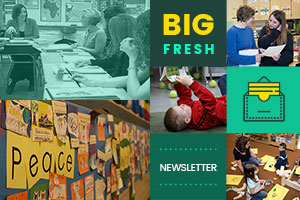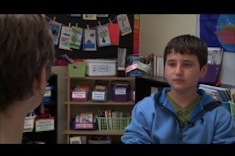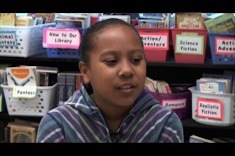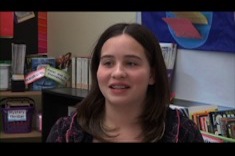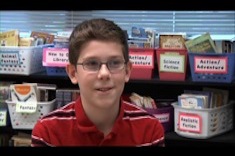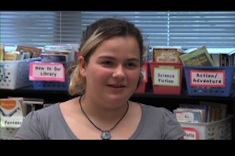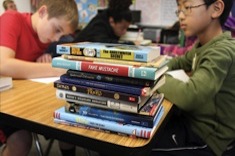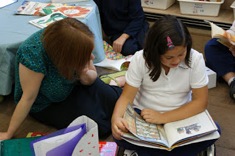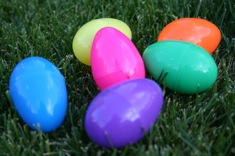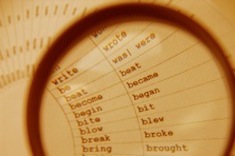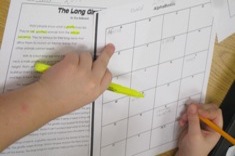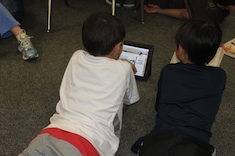Library
Choice Literacy Articles & Videos
The Choice Literacy library contains over 3,000 articles and 900 videos from 150+ contributors. Classic Classroom and Literacy Leadership subscribers have access to the entire library. Content is updated continuously, with five to six new features published each week.
Latest Content
The Big Fresh May 3, 2014 Piled Up
Helping struggling learners is the focus of this week’s Big Fresh.
Understanding the Summer Slide: Sharing Data with Parents and Students
Clare Landrigan and Tammy Mulligan explain why it is important to share data with parents while school is still in session in order to avoid the summer slide. This is another installment in their summer reading series.
Supporting Struggling Readers: David’s Story
Katie DiCesare has wise advice for helping readers who are falling behind their peers but don't qualify for additional services.
Reading Interviews: Part 3
We conclude our video series of end-of-year reading interviews with Ruth Shagoury. In this installment, she asks students about how they have changed as readers throughout the year.
Writing Interviews: Part 3
Ruth Shagoury’s end-of-year writing interviews finish with questions about change and the teacher’s influence on writing.
Mental Images: Connecting Reading and Sketching
Sean Moore confers with second grader Teague, masterfully demonstrating how to move between instruction and celebration when conferring with a child who struggles with reading.
Getting Ready for Summer Reading: A Lesson Cycle
Franki Sibberson designs a lesson cycle to prepare students for summer reading.
Reading Interviews: Part 2
Ruth Shagoury asks sixth-grade students about reading at home and how they have changed as readers this year.
Writing Interviews: Part 2
Ruth Shagoury’s end of year writing interviews with sixth graders continue with questions about writing strengths and weaknesses.
The Big Fresh April 26, 2014 Are We Still Serving Hamburgers?
Preparing for summer reading is the focus of this week’s Big Fresh.
The Gifts of Literacy
Kelly Petrin reflects on what she values most in the final days with children in her preschool program, and what she shares with parents.
Making Summer Reading Plans
Clare Landrigan and Tammy Mulligan have advice for making summer reading plans with students. This is the next installment in their summer reading series.
Reading Interviews: Part 1
Interviews at the end of the school year can help students consider their growth as readers and writers. In this week’s video, Ruth Shagoury interviews sixth graders about their reading. This is the first video in a three-part series.
Writing Interviews: Part 1
Ruth Shagoury interviews sixth graders about their writing at the end of the year. This is the first video in a three-part series.
The Big Fresh April 19, 2014 Spammer for a Day
We look at how to finish the year strong in this week’s Big Fresh.
Getting Books into Students’ Hands for Summer Reading
Clare Landrigan and Tammy Mulligan share tips for getting books to students for summer reading. This is the first installment in their new summer reading series.
Reading Through Spring
Gigi McAllister has many suggestions for a strong reading finish to the school year.
End-of-Year Literacy Interviews
Ruth Shagoury explains why year-end interviews are so valuable, and includes questions to use in your interviews.
April Literacy Contracts: Discovery
Megan Ginther and Holly Mueller choose a theme of discovery for their April literacy contracts.
Conferring About Independent Reading
Karen Terlecky confers with Alex, a fifth grader who needs help choosing books for independent reading.
The Big Fresh April 12, 2014 An Average Overachiever
We consider English language learners in this week’s Big Fresh.
The Big Fresh April 5, 2014 Smart Board
Digital literacy is the focus of this week’s Big Fresh.
Remembering to Slow Down at the End of the School Year
Maria Caplin shares her strategies for slowing down at the end of the year with her fifth graders and reflecting on the growth and learning that can't easily be measured with tests.
Phrasal Verbs and English Language Learners
Jennifer Schwanke writes about the need for teachers to understand how phrasal verbs work and why it is essential to teach them explicitly to English language learners.
Working with Emergent Bilingual Children (PODCAST)
In this podcast, Heather Rader chats with Ruth Shagoury about working with emergent bilingual chidren and their families.
Connecting Nonfiction Reading and Writing: Conferring with Hermione
Stella Villalba confers with Hermione, a first grader who is also an English language learner. Hermione is combining research and writing as she writes a nonfiction report.
Nonfiction and English Language Learners
Stella Villalba has advice about connecting nonfiction, young English language learners, and the Common Core.
Connecting Class Social Media in Eight Simple Steps
Colby Sharp shares step-by-step guidance for linking class blogs, Twitter and private Facebook pages when sharing with families. Best of all, you can turn over the task to students.
Creating Video with Students: Tools and Tips
Bill Bass gives advice and provides resources for creating video with high school students.
Character Study Share Session in First Grade
First graders in Katie DiCesare’s class discuss character traits in books from independent reading during a whole-class share session.
Browse Content By
Type
Category
- Assessment Tools
- Big Fresh Archives
- Booklists
- Choice Numeracy
- Classroom Design
- Common Core
- Community Building
- Conferring
- Content Literacy
- Digital Literacy
- English Language Learners
- Equity
- Family Relations
- Free Samples
- Guiding Groups
- Leadership
- Literacy Coaches
- Mentor Texts
- Minilessons
- New Teacher Mentors
- Podcasts
- Poetry
- Quote Collections
- Reading Strategies
- Self Care
- Struggling and Striving Learners
- Talking and Listening
- Teacher Study Groups
- Teaching Reading
- Teaching Writing
- Word Study and Vocabulary
Author
- Melissa Quimby
- Nawal Qarooni
- Gwen Blumberg
- Julie Cox
- The Lead Learners
- Hannah Tills
- Josie Stewart
- Ruth Metcalfe
- Mallory Messenger
- Becca Burk
- Jodie Bailey
- Vivian Chen
- Mary Brower
- Tiffany Abbott Fuller
- Stephanie Affinito
- Ruth Ayres
- Leigh Anne Eck
- Heather Fisher
- Shari Frost
- Julie Johnson
- Suzy Kaback
- Gigi McAllister
- Shirl McPhillips
- Melanie Meehan
- Cathy Mere
- Debbie Miller
- Tara Barnett and Kate Mills
- Tammy Mulligan
- Dana Murphy
- Bitsy Parks
- David Pittman
- Brenda Power
- Heather Rader
- Matt Renwick
- Mandy Robek
- Christy Rush-Levine
- Gretchen Schroeder
- Jen Schwanke
- Brian Sepe
- Katherine Sokolowski
- Stella Villalba
- Jennifer Vincent
Grade Level
Choice Literacy Membership
Articles
Get full access to all Choice Literacy article content
Videos
Get full access to all Choice Literacy video content
Courses
Access Choice Literacy course curriculum and training

